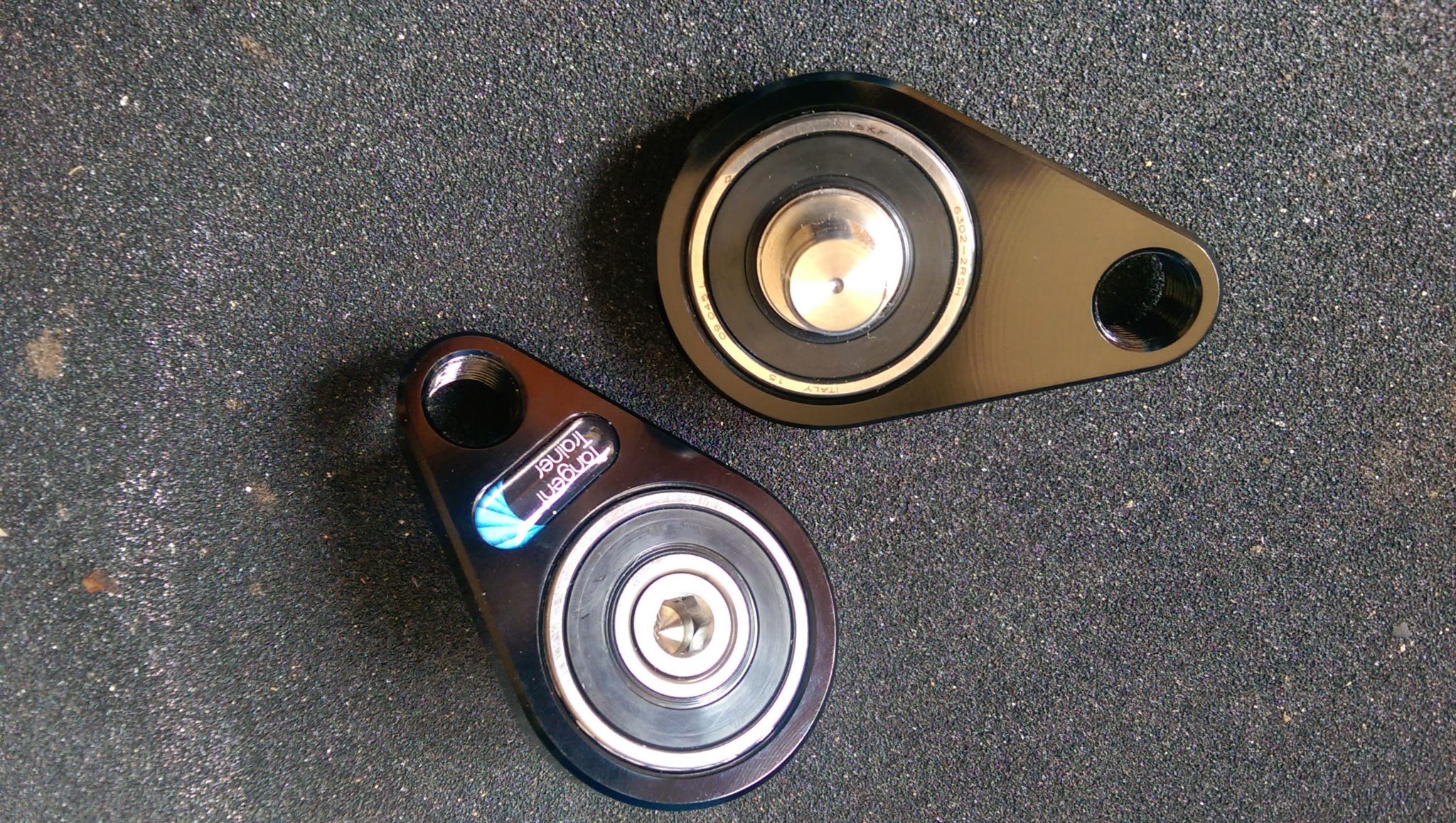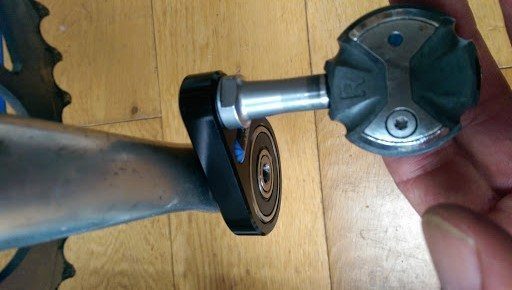Tangent Trainer Review
Tangent Trainer Review
Simon Whiten
Review of the Tangent Trainer pedalling technique device
The Tangent Trainer, a device that will get you thinking about pedalling technique, recruiting muscles previously little used and even promises increased power output…
To read about what the Tangent Trainer is, please see my Preview article here. Since writing that I’ve had just over 3-months to try out the Tangent Trainer. Longer is going to be required for me to feel totally confident in making definite conclusions, and whilst what I think I have learned may not form the basis of a scientific paper, it is interesting and might make you sit up and take note of this training device.
In summary, the Tangent Trainer consists of a pair of short cranks that fit between your own cranks and your pedals. They spin freely and require you to pedal in a controlled circle in order to pedal smoothly. They are designed to be used exclusively on the turbo trainer and the makers claim that they can produce power increases of up to 20% by recruiting more muscles into your pedal stroke, so there’s plenty to get excited about.
Fitting the Tangent Trainer
Fitting the Tangent Trainer is straightforward but, when being done on a regular basis, can become a bit of a chore; taking your pedals off your bike, fitting the Tangent Trainers and then refitting your pedals is not the hardest job in the world, but can be time consuming, eating into valuable training time.
I am forever trying to gain time and I soon managed to save time by keeping a spare pair of pedals permanently fixed into the Tangent Trainers. This definitely led to more regular usage so is worth bearing in mind should you decide to invest in a pair of Tangents.
The units are very well engineered and have held up well to regular usage. The bearings used seem to be very good and the Trainers still rotate very freely as you’d expect.
Using the Tangent Trainer
My first coach, many years ago now, stressed the importance of using a circular pedalling motion, which for many years I tried to do, concentrating on pulling up as well as pushing down, especially when the going got tough such as on a hill. But then I read a paper, a scientific paper no less though I forget by whom, about pro cyclists who weren’t doing this, but instead only focused on pushing down. Being fickle, I soon forgot all about trying to pull up…
Track racing and commuting on a fixed gear meant I assumed I had a great pedalling technique anyway, so I didn’t worry about it, never mind practiced it with the aim of making it more powerful. Since using the Tangent Trainer, however, I have started thinking about my pedalling a lot more again, pulling up consciously on those pedals, trying to pedal in circles once more.
The Tangent Trainer aims to make that ‘pulling up’ not just something you do on the steepest, most severe of slopes, but all of the time, even when pedalling at high cadence. In so doing you will recruit more muscles into your pedalling action and develop more power during your pedal stroke. But does it succeed?
Well so far I would have to say that yes it does, and I think I have some data which backs that up, to a degree, and marries with the manufacturer’s claims that it can help develop your pedal stroke into a more powerful one.
My experience
Before we get into this, it’s worth mentioning that my training time is somewhat limited. Gone are the days when I did 20 hours per week, and even 10 hours of training is a rarity for me; most are single figures and much of that is on the turbo trainer doing intense interval sessions, out of necessity not choice.
Getting started with Tangent is tricky. Pedalling with the Tangent Trainers fitted is not normal, natural or comfortable. It is just like riding a bike that is several sizes too big for you – an odd sensation.
After a while though you do adjust and get a feel for it. You forget trying to push down to the bottom of the pedal stroke, and have to concentrate on cycling in circles. This lets you keep the Tangent Trainer at the correct angle.
To explain, if you imagine the hour hand of a clock at 9 o’clock, that’s the position the Tangent crank needs to be in. This prevents it ‘falling’ to six o’clock, which would give the sensation of being on a bike that’s too big and of ‘bottoming out’. There are some good graphics on the Tangent Trainer website which explain this (see the link at the end of the article).
Pluses and Minuses
There are a few issues with Tangent Training. Firstly using it for long sessions periods is not a great idea. The first few sessions I did with Tangent were hour long turbo sessions but after about 20-minutes things can get uncomfortable, you start going a bit numb and it feels as if you could possibly put yourself at risk of never having children again (perhaps not such a bad thing when you already have three).
Obviously the pressure placed on your ‘saddle area’ is much greater than with a normal pedal set-up as with Tangent there is no bottom of the pedal stroke to raise yourself up out of the saddle against. So I quickly adopted the suggested method of doing a brief 20-minutes alongside my normal turbo sessions. Most often I did the 20-minutes before my normal training as part of an extended warm-up as I felt that worked best.
Secondly, you will get some muscular discomfort, ‘Delayed Onset of Muscle Soreness’ (DOMS), when first using it, especially in the muscles that you don’t usually feel too much from cycle training. My hamstrings and hip flexors were particularly noticeable after using the Tangent Trainer. It was obvious from that discomfort that something different was going on.
Final thing to note is that the Tangent Trainer widens you pedal stance which can feel odd and could lead to problems. I however have had no issues with this in over 3-months and I think if you are just doing 20-minute sessions it should be fine.
As for the positive, after getting off the turbo, having done a tangent session, and immediately getting on the rollers, my legs were on a mission of their own! They felt fast and it reminded me of the sensation you get when you get back on your road bike after having been riding a fixie for a prolonged period. There’s definitely a positive transference from the circular pedalling technique you build up on the Tangent Trainers to the smooth technique required to be quick on the rollers. Worth bearing in mind if you are into roller or track racing…
Continued overleaf…
[rps-include blog=127.0.0.1 post=30117]







